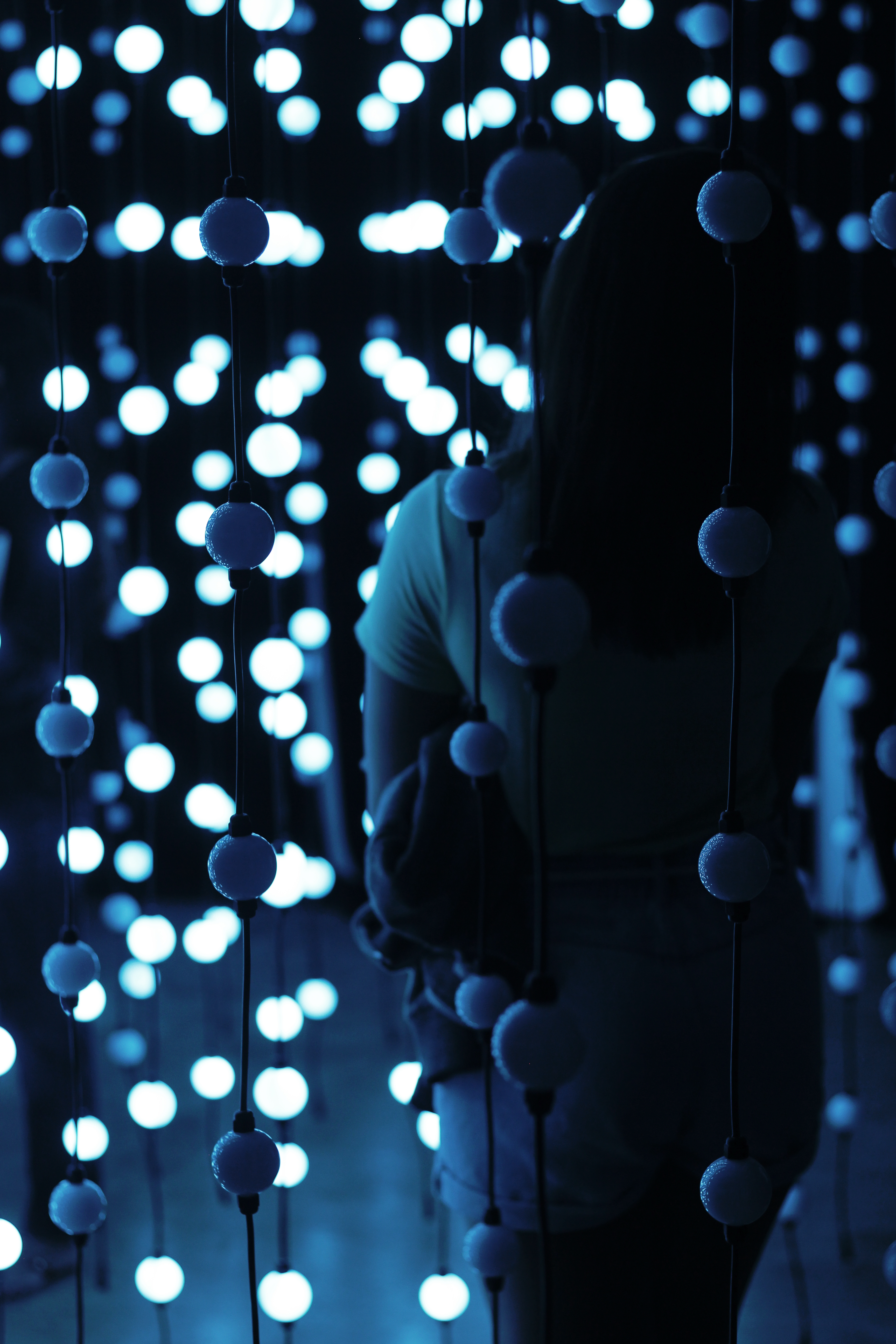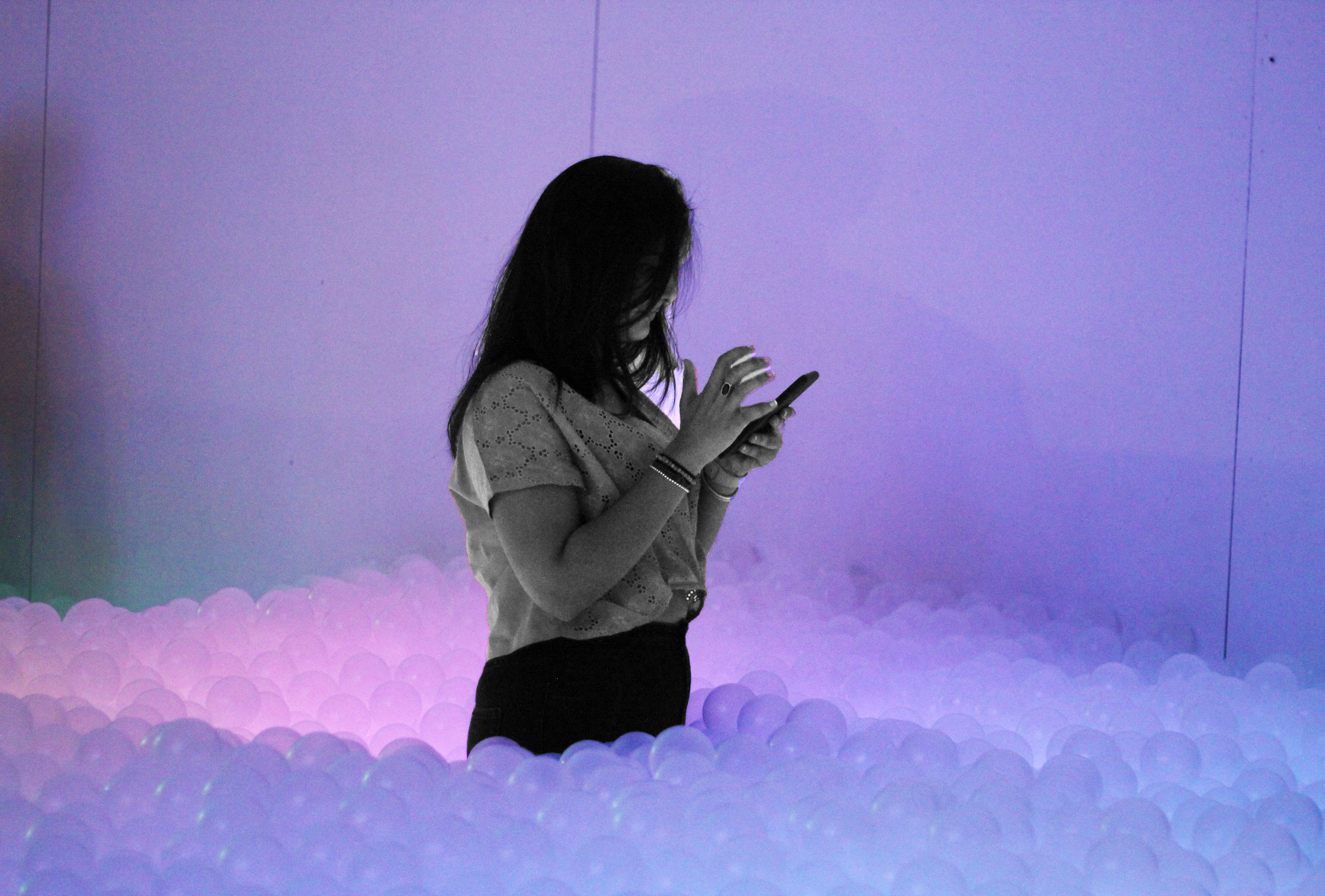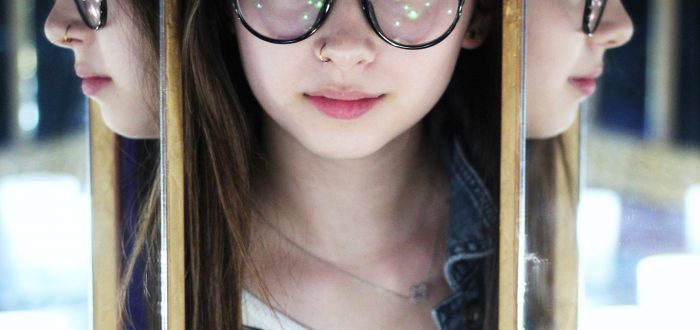Written By – Marissa Greene
Photos by – Alexa Smith
Following the closing of HOPE Outdoor gallery, Hopscotch Light & Sound partners with HOPE Campaign in the rise of controversy and popularity of immersive art.
You are scrolling down your timeline on Instagram, and then you see it: a photo of one of your friends posing in a room with vibrant colors, interesting shapes, and props. When clicking on the location of their post, you might be surprised that the photo was taken at a museum.

Between 2015 and 2016, museums such as the Renwick Gallery and the Museum of Ice Cream started getting all the craze amongst social media users due to these exhibits’ immersive art. Immersive art or installation art, as some may say, is a type of genre that includes three-dimensional works that are created to alter the viewer’s perception of the space.
These pop-up museums of immersive art usually migrate from one location to another and are in large warehouses that are sectioned off for different pieces (installations) of art. These museums can use anything from food, shapes, lighting, and emotions to create specific art installations and encourages the audience to be a part of it.
Immersive art has become highly popular with young adults and especially those who use social media, so much so that art museums have seen a significant increase in subscriptions and ticket sales. According to an article by The Atlantic in 2017, the Renwick Gallery drew in more visitors in six weeks than compared to the year prior after exhibiting immersive art.
Now more than ever, people are being invited to see themselves within art and the only frames are the ones audiences post on social media due to this trend. Some have even began to question if the nature of art museums are being compromised to drive in consumers and produce sales. This controversy is what had started the “Instagram factory” or “Instagram trap” reputation that some museums have today.
From February 14th till March 31st, the citizens of Austin got their own taste of immersive art from a pop-up exhibit known as Hopscotch Light and Sound. Within the 10,000 sq. ft warehouse was thirteen distinctive art installations. Hopscotch obtained a significant social media presence with 1,036 posts containing the hashtag #hopscotchlightandsound on Instagram.
“One of my sister’s friends came and posted a picture of it so I bought tickets to see for it myself,” visitor Abby Rink said. “Me and my friends are really just here to see and take pictures.”

Although the museum has lured visitors through social media platforms like Instagram, Nicole Jensen, co-founder of Hopscotch Light and Sound, states that was never their plan.
“We wanted to get the message out that this was about art,” Jensen said. “Despite a lot of people taking photos, which is fine we don’t fault them for, we know that there is a lot of Instagram-type factories out there and we wanted the people to know that wasn’t our intention.”
Hopscotch chose to get this message across to their audience in numerous ways. The museum contained 13 installations, where visitors could change the colors of a neon LED wall through an electronic paintbrush, scream into a microphone and see their soundwaves light up a piece of art, or even lounge in a clear-ball pit that was illuminated from lights below. Out of the 13 installations, more than half of the artists involved were local.
“The creator of the neon screen room is a street artist we asked to make his art come to life,” Jensen said. “There is not a point of gravity for immersive artists to show their pieces, and similarly, there aren’t a lot of places for large amounts of people to go experience it.”
Not only did Hopscotch come to Austin to showcase a local artist’s work, but also to fund a cause. In 2016, the well-known HOPE outdoor gallery, also known as graffiti park, announced they were looking for a new location and closed the space from the public on January 2nd, 2019. HOPE and Hopscotch decided to partner up, with all of the sales made from Hopscotch Light & Sound would go into funding the new HOPE outdoor gallery coming later this year.

“I think a lot of people were upset when the downtown location closed,” Jensen said. “However, to me, I think the new gallery will be way better because it will be curated proper space with art shows and food and drinks.”
The once abandoned condo project that started in the mid-to-late ’80s will soon be a much larger space with restrooms, space for art classes, and more parking. HOPE also has values to preserve the art made at the gallery instead of it being tagged with other visitors names or phrases, something that has seen a lot at the outdoor gallery prior. Jensen not only sees much promise in the new gallery but also sees this as a big step for the Austin community.
“People are saying that Austin is losing it’s weird and I think that’s on us,” Jensen said. ”We can’t just say, ‘Oh a place closed that was 20 years old, Austin isn’t weird anymore.’ We have to keep cultivating the weird. The saying is ‘Keep Austin Weird and Support Local Business,’ so I think that is very important that everyone lives here continues to live that motto if they want Austin to stay the same.”
As immersive art continues to be a trend within this day and age, many look forward to the next pop-up gallery coming to their city whether it is specifically for their Instagram feed or not. The new HOPE outdoor gallery will be located in Carson Creek Ranch and plans to open up this coming fall of 2019. Hopscotch is planning on having a permanent location in San Antonio, moving from a 10,000 sq ft warehouse to a 17,000 sq ft facility in the fall as well.



Comments are closed.